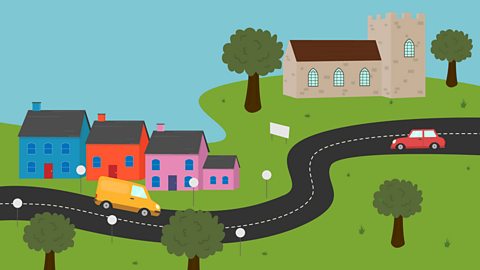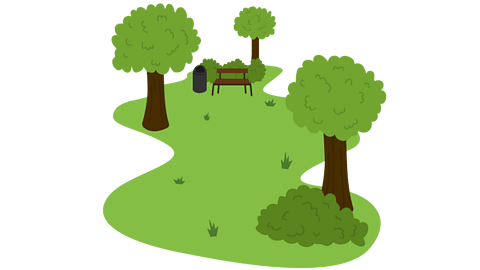Learn all about places to visit and talking about how to get to them in Spanish with these handy words and phrases.
Places around town
Here are some places you might have where you live:
| Spanish | English |
|---|---|
| Sorry, something went wrongCheck your connection, refresh the page and try again. | home |
| Sorry, something went wrongCheck your connection, refresh the page and try again. | the school |
| Sorry, something went wrongCheck your connection, refresh the page and try again. | the shops |
| Sorry, something went wrongCheck your connection, refresh the page and try again. | the cinema |
| Sorry, something went wrongCheck your connection, refresh the page and try again. | the park |
| Sorry, something went wrongCheck your connection, refresh the page and try again. | the cafe |
Describing where you are going

When getting out and about it’s important to know the places around the town.
To describe where you are going you can use the verb Sorry, something went wrongCheck your connection, refresh the page and try again..
This is an irregular verb, which means when talking in different tenses or about yourself it can look different.

To say ‘I go’ in Spanish using the verb Sorry, something went wrongCheck your connection, refresh the page and try again. you say Sorry, something went wrongCheck your connection, refresh the page and try again. (I go), for example:
Sorry, something went wrongCheck your connection, refresh the page and try again. - I am going home
Sorry, something went wrongCheck your connection, refresh the page and try again. - I am going to school
Sorry, something went wrongCheck your connection, refresh the page and try again. - I am going to the cinema

Did you know?
You might have noticed some of the sentences above either have 'al' or 'a la'.
You use 'al' for masculine nouns such as Sorry, something went wrongCheck your connection, refresh the page and try again. and Sorry, something went wrongCheck your connection, refresh the page and try again.. It means 'to the'.
You use 'a la' for feminine nouns like Sorry, something went wrongCheck your connection, refresh the page and try again. and Sorry, something went wrongCheck your connection, refresh the page and try again.. It also means 'to the'.

Describing how you get there
Here are some key transport words:
| Spanish | English |
|---|---|
| Sorry, something went wrongCheck your connection, refresh the page and try again. | by car |
| Sorry, something went wrongCheck your connection, refresh the page and try again. | by bus |
| Sorry, something went wrongCheck your connection, refresh the page and try again. | by train |
| Sorry, something went wrongCheck your connection, refresh the page and try again. | by foot |

You can now put some of the vocabulary together to make sentences like this:
Sorry, something went wrongCheck your connection, refresh the page and try again. - I go to school by train
Sorry, something went wrongCheck your connection, refresh the page and try again. - I go to the shops by car
Sorry, something went wrongCheck your connection, refresh the page and try again. - I go to the park by foot

The ‘v’ sound
In Spanish, the ‘v’ sound is pronounced exactly the same as a ‘b’ sound only softer:
Sorry, something went wrongCheck your connection, refresh the page and try again. - I go
Sorry, something went wrongCheck your connection, refresh the page and try again. - holiday
More on Talking topics
Find out more by working through a topic
- count1 of 12

- count2 of 12

- count3 of 12

- count4 of 12
